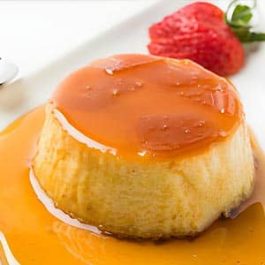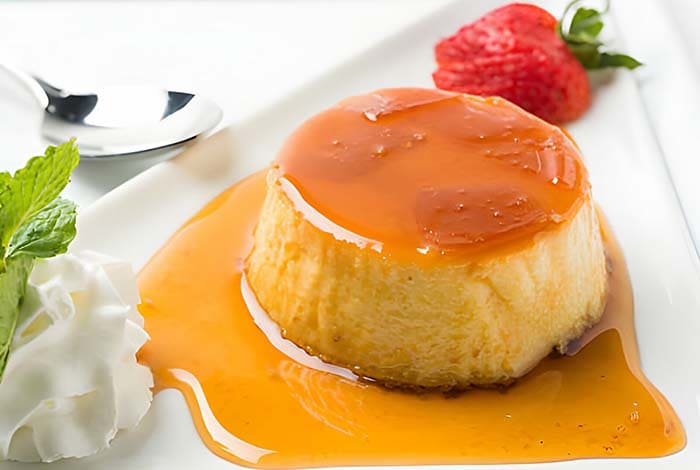Introduction to Spanish Cuisine
Spanish cuisine is a vibrant tapestry of flavors, deeply rooted in a rich cultural heritage that spans thousands of years. Known for its diverse ingredients and regional variations, Spanish food is a testament to the country’s varied geography and history. From the seafood-rich dishes of Galicia to the Moorish influences in Andalusian cuisine, each region contributes its unique flavors to the national palate. Central to Spanish culinary tradition is the concept of tapas, small dishes shared among friends, which embodies the Spanish ethos of community and enjoyment of life. Olive oil, saffron, garlic, and tomatoes serve as foundational ingredients, weaving through the cuisine to create dishes that are both hearty and refined. Among these culinary treasures, Classic Spanish Flan stands out as a beloved dessert, offering a sweet conclusion to the savory journey of Spanish cuisine.
History of Flan: From Rome to Spain
The history of flan begins in ancient Rome, where it was initially a savory dish made with eel and flavored with spices. As the Roman Empire expanded, so did the recipe for flan, which evolved and adapted to the tastes of the conquered lands. It was the Spanish, however, who transformed flan into the sweet, caramel-coated dessert we know today. The Moors, during their occupation of Spain, introduced new ingredients such as almonds and citrus, enriching the Spanish pantry and influencing the evolution of flan. Over the centuries, flan became a fixture in Spanish convents, where nuns experimented with recipes, adding milk and sugar to create the creamy dessert. By the time of the Spanish explorations, flan had become a symbol of Spanish cuisine, carried across the Atlantic to the New World where it would become a staple in Latin American desserts as well. The journey of flan from Rome to Spain is a fascinating tale of culinary adaptation and innovation, reflecting the dynamic history of the regions it touched.
Cultural Significance of Flan in Spain
In Spain, flan is more than just a dessert; it is a cultural icon, embodying the warmth and simplicity of Spanish hospitality. Its presence at family gatherings and festive occasions speaks to its enduring appeal and its role in bringing people together. The simplicity of its ingredients—eggs, milk, and sugar—belies the depth of flavor and texture that flan brings to the table, making it a favorite among all ages. Moreover, flan’s versatility allows it to be infused with a variety of flavors, from coffee to coconut, showcasing the innovative spirit of Spanish cuisine. The cultural significance of flan in Spain transcends its culinary aspects; it is a dish steeped in history and tradition, a sweet reminder of Spain’s rich cultural tapestry. As such, flan continues to be cherished, a testament to the enduring legacy of Spanish culinary traditions.
The Classic Recipe
Ingredients Overview
- Eggs
- Sugar
- Milk
- Vanilla extract (optional)
Step-by-Step Cooking Instructions
- Begin by preparing the caramel sauce, melting sugar until it reaches a golden-brown color.
- Pour the caramel into a baking dish, swirling to coat the bottom.
- Mix eggs, milk, and sugar (and vanilla, if using) to make the custard mixture.
- Pour the custard over the caramel in the baking dish.
- Bake in a water bath until the custard is set but still jiggy.
- Chill before inverting onto a plate to serve, with the caramel sauce on top.
Variations of Flan Across Spain
- Flan de Queso: Incorporating cream cheese for a richer texture.
- Flan de Coco: Adding coconut milk and shredded coconut for a tropical twist.
- Flan de Café: Infusing the custard with strong espresso for coffee lovers.
Cooking Tips and Tricks
- Common Mistakes and How to Avoid Them
- Overcooking the caramel (should be golden, not dark brown).
- Not straining the custard mixture to remove egg strands.
- Expert Tips for the Perfect Flan
- Use a water bath to ensure even cooking and a silky texture.
- Chill thoroughly before serving to enhance the flavors and texture.
FAQs
What Makes Spanish Flan Different?
- Spanish Flan distinguishes itself through its simplicity and the depth of its caramel flavor. Unlike other custards that might incorporate heavy creams or a multitude of flavors, Spanish Flan relies on the basic yet perfect combination of eggs, sugar, and milk, with vanilla essence as a subtle enhancer. The technique of caramelizing sugar for the base adds a rich, almost smoky sweetness that perfectly complements the creamy custard. This balance of simplicity and flavor, along with its silky texture, sets Spanish Flan apart from other variations of flan or custard desserts around the world.
Can Flan Be Made in Advance?
- Yes, Classic Spanish Flan is an excellent dessert option to prepare in advance. In fact, flan benefits from being made ahead of time, as this allows the flavors to meld and the custard to fully set, resulting in a more cohesive and rich dessert. After cooling to room temperature, the flan should be covered and refrigerated for at least 4 hours, though overnight is often preferred. This make-ahead nature makes flan a convenient and stress-free dessert for entertaining, allowing hosts to focus on other meal preparations.
How to Store and Serve Flan
- Storing and serving Classic Spanish Flan correctly is key to preserving its texture and flavor. Once the flan has cooled to room temperature and has been refrigerated to set, it should be kept in the fridge until ready to serve. Cover the flan with plastic wrap or aluminum foil to protect it from absorbing any odors. For serving, run a knife around the edges of the flan to loosen it from the mold. Then, place a large plate over the mold and quickly invert it. The flan should slide out, with the caramel sauce flowing over its top. Serve chilled for the best taste and texture.
Dietary Modifications (Vegan, Gluten-Free)
- Adapting Classic Spanish Flan for dietary needs is straightforward, making it a versatile dessert for everyone to enjoy. For a vegan version, replace the eggs with silken tofu or agar-agar to maintain the custard’s texture, and use plant-based milk such as almond or coconut milk. Sweeten with maple syrup or agave nectar instead of sugar for a more natural sweetness. For a gluten-free flan, ensure that any additional flavorings or toppings are gluten-free, as the basic ingredients of flan (eggs, sugar, and milk) are naturally gluten-free. These modifications allow individuals with dietary restrictions to enjoy the rich and creamy delight of a classic Spanish Flan without compromise.
Conclusion
Classic Spanish Flan is a testament to the beauty of Spanish cuisine, where simplicity and quality ingredients lead to exquisite results. Whether you’re a seasoned chef or a culinary novice, making flan invites you to partake in a tradition that spans centuries and continents, bringing a taste of Spain into your home.

Classic Spanish Flan Recipe
Equipment
- Medium saucepan
- Round baking dish (e.g., 9-inch)
- Large mixing bowl
- Whisk
- Fine mesh sieve
- Roasting pan for water bath
- Aluminum foil (optional)
Ingredients
- 1 cup sugar for caramel
- 1/4 cup water for caramel
- 4 large eggs
- 1 cup sugar for custard
- 2 cups whole milk
- 1 teaspoon vanilla extract
Instructions
- Prepare the Caramel: In a medium saucepan, combine 1 cup sugar and 1/4 cup water. Cook over medium-high heat, stirring until sugar dissolves. Stop stirring and cook until it turns a deep amber color. Immediately pour into the baking dish, tilting to coat the bottom. Let cool.
- Make the Custard: Whisk eggs, 1 cup sugar, and vanilla in a large bowl. Gently warm the milk in a saucepan, then gradually whisk into the egg mixture.
- Bake: Preheat oven to 350°F (175°C). Pour custard over caramel. Place baking dish in a roasting pan, fill with hot water halfway up the sides of the dish. Bake for 50-60 minutes. Let cool, then chill for 4 hours.
- Serve: Run a knife around the flan's edge, invert onto a plate. The caramel sauce will cover the custard.
Notes
- Caramel Tip: Watch the caramel closely as it cooks to prevent burning. Aim for a golden amber color for the best flavor.
- Smooth Custard: Strain the custard mixture through a sieve to remove any egg strands or lumps for a smoother texture.
- Chilling: For the best flavor and texture, chill the flan in the refrigerator overnight.
- Dietary Modifications: For a vegan or dairy-free version, substitute the milk with almond or coconut milk and use agar-agar in place of eggs. Adjust the sweetness as needed.

